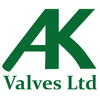Choosing the right Sferaco valves and fittings is essential for any plumbing project. These components are not merely connectors but crucial elements that influence the efficiency and reliability of your plumbing system. Whether you're working on a residential, commercial, or industrial project, Sferaco offers a variety of valves and fittings tailored to meet various needs. Understanding how to select the best products ensures not only optimal performance but also the longevity of your plumbing installation.
1. Understanding the Basics of Sferaco Valves and Fittings
What Are Sferaco Valves?
Sferaco valves play a critical role in controlling the flow of fluids within a plumbing system. Depending on the design, they can regulate, start, or stop the flow of liquids or gases. Common types of Sferaco valves include ball valves, butterfly valves, and check valves, each tailored for specific applications and fluid types. Understanding the function of each valve will help you select the right one for your project.
What Are Sferaco Fittings?
Sferaco fittings link different sections of piping or tubing, ensuring a leak-free connection. They come in various forms, such as elbows, tees, reducers, and couplings. Each fitting type serves a purpose, from changing direction in piping (elbows) to transitioning between different pipe sizes (reducers). Grasping the basics of fittings is vital for creating a robust plumbing framework.
2. Assessing Your Project Requirements
Analyze Fluid Properties
When selecting Sferaco valves and fittings, assess the characteristics of the fluids involved. Consider factors like temperature, pressure, and corrosiveness. For example, corrosive fluids may require specific materials to prevent deterioration, while high-pressure applications may demand robust designs for safety. Understanding the chemistry and conditions of the fluids can dramatically influence the choice of components.
Determine Application Needs
Your application guides which valves or fittings you select. A residential plumbing system may require simple shut-off valves, while a commercial facility might need more complex control systems. Additionally, consider whether the system mandates high flow rates or specific connections, such as those needed for irrigation systems or industrial equipment. This assessment will streamline your decision-making process.
3. Evaluating Valve Types
Ball Valves
Sferaco ball valves are excellent for quick shut-off applications. With a full port design, they allow for unrestricted flow, which is beneficial in systems where pressure drop needs to be minimized. Available in various sizes and materials, they are versatile and suitable for a range of fluids, including liquids and gases.
Butterfly Valves
For large diameter pipes, Sferaco butterfly valves offer a compact design with low pressure loss. A 90-degree rotation fully opens or closes them, making them ideal for applications requiring frequent cycling. They can be used in different settings, from cooling systems to wastewater treatment, showcasing their versatility.
Check Valves
To prevent backflow in a system, Sferaco check valves are essential. They are designed to allow fluid flow in one direction only, effectively protecting your system from potential hazards. When selecting check valves, ensure they are compatible with the rest of your plumbing components for seamless integration.
4. Understanding Fitting Types
Elbow Fittings
Elbow fittings are vital for changing the direction of a line in a plumbing system. Sferaco elbows come in various angles (e.g., 90-degree and 45-degree) to suit different layout requirements. Ensure the elbow size matches the pipes to maintain a consistent flow rate.
Reducer Fittings
Reducer fittings are used to transition between different pipe diameters. For instance, they allow you to connect a larger pipe to a smaller one, making them ideal for expanding or contracting a plumbing system. Choosing the right reducer ensures that flow is maintained without causing pressure drops.
Tees and Crosses
Tees and crosses are crucial for creating branch lines in a plumbing system. They enable multiple paths for fluid flow and are often used in complex plumbing setups. Ensure to select fittings that accommodate the necessary pipe sizes and orientations to avoid flow issues.
List of Common Sferaco Fittings:
- Elbows
- Reducers
- Tees
- Cross fittings
- Caps and plugs
5. Material Selection Considerations
Choosing the Right Material
Material selection for valves and fittings is essential for ensuring durability and performance. Common materials for Sferaco products include brass, stainless steel, and PVC. Brass is durable and resistant to corrosion, making it suitable for many applications, while PVC is lightweight and resistant to chemicals, ideal for parts that are not under high pressure.
Matching Material to Application
Consider the specific requirements of your project and the properties required of the fittings. For example, aggressive chemicals may require specialized materials like CPVC or special alloys to withstand constant exposure. Matching the material with your application prevents issues like corrosion, leaks, and premature degradation of components.
Conclusion: Making the Right Choice
Ultimately, choosing the right Sferaco valves and fittings requires careful consideration of your project's specific needs. By understanding the fluid properties, the purpose of the valves and fittings, and the material options available, you can select components that ensure a reliable, efficient plumbing system. Don't hesitate to consult with professionals who can provide insights tailored to your unique situation. Whether it's for residential, commercial, or industrial use, making informed choices is key to successful plumbing installations.
FAQ
1. What factors should I consider when choosing Sferaco valves?
Consider fluid type, temperature, pressure, and the specific role the valve will play in your system, whether it's for shut-off, flow regulation, or backflow prevention.
2. Are Sferaco valves and fittings suitable for all plumbing systems?
Yes, Sferaco offers a range of valves and fittings designed to meet multiple plumbing requirements, making them suitable for various applications.
3. How do I ensure compatibility between fittings and pipes?
Ensure that the sizes, types, and materials of fittings match those of the pipes in your system to prevent leaks and maintain flow efficiency.
4. Can I use plastic fittings in high-temperature applications?
It depends on the plastic material. Some can withstand high temperatures, while others cannot. Always check the specifications before use.

